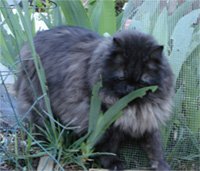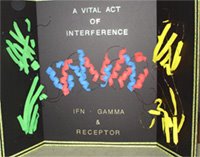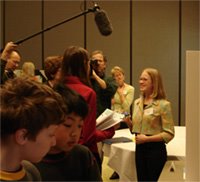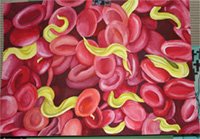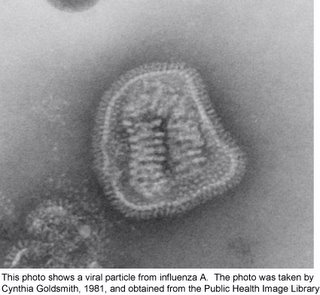Two puzzling streams of thought have merged lately, leaving me in an eddy of confusion.
In the first stream, swim my observations of the kids in our house. We bought computers for both of our kids with the naive parental notion that they would be important for school.
I still think they are important. And both kids do use their computers routinely.
But, do they use them for school?Not much. Computers, it seems, are all-purpose entertainment centers for watching DVDs, working with digital photography, communicating with friends through instant messaging, Skype and e-mail; and for organizing music.
None of their classes have the kids use their computers, with the exception of language arts or history classes where they mostly use them for writing papers.
As a scientist, parent, occasional community college instructor, and someone who writes
instructional materials for science students, I'm mystified by this observation. Why don't our kids use computers for subjects like science and math? They could be making cool graphs and doing statistics or writing algorithms with programs like Excel. Their science classes could have them looking at GIS data, working with Google maps, searching DNA sequences, or doing fun things with molecular modeling.
I felt like a subversive when I showed my oldest daughter how to use the
NCBI Taxonomy database to identify kingdoms and phyla. There are so many wonderful resources out there and I
know some high school and community college teachers do use them, but I also know
my kids do not.
Why don't our kids use computers for science and math?The answer to that question lies floating in the second stream but it's a tricky one to catch hold of.
- Is it lack of money? Are the school districts short on computers?
All of these are at least partly true.
This report and quote from the National Science Foundation certainly implies that lack of computing experience could be a factor.
America's Pressing Challenge - Building a Stronger Foundation, Feb 23, 2006Technology has its separate challenges. Teachers must shift from being "familiar with" computers to being able to more effectively use computers in support of their instruction. Most of their students are already entering school computer literate, but "do not have a grasp of the science and engineering that underlie that technology."
Lack of money could be another factor. Many science teachers share a computer lab with several other classes, so getting the lab requires a combination of advance-planning and finely-tuned negotiation skills. Still, many teachers will do an activity or two in the computer lab, and never assign outside computer work except for writing papers.
But when I ask teachers, "Why don't high school or community college students learn how to use the computer as a scientific tool?"
I get a different answer.
The teachers, I know, say they won't use computers for science assignments because there are students who don't have home computers.
Admittedly, my sample size is small and non-random, but I've heard the same answer, verbatim, in different parts of the country.
I understand being reluctant to add assignments that require computers that students don't have. But aren't there any other options? I find it strange that this reluctance (
as far as I know) only appears in the science and math classes. Language arts teachers require typed papers. Do they
ask if kids have computers first? Are
science students the only kids in the world still using typewriters?
Universities and private high schools don't seem to have this problem. They just require all students to get computers.
The report above indicates that the NSF believes it's important for kids to learn how do science with computers. Five years ago, in 2001, 70% of the households in Seattle had on-line access, causing it to rank
2nd in the nation in terms of wired cities. Given the large fraction of households in Seattle that have computers, and the number of parents who say they buy them for their children, it seems like parents
want their kids to become adept with technology.
But how will kids acquire these skills? If their teachers won't assign the technology, the kids will have to work to learn it on their own, and somehow manage not to be distracted by all the entertainment opportunities that computers offer instead.
Personally, I don't think many public school students will be able to teach themselves how to use computers for scientific research. At least, not until they have guidance from their teachers and access to computers beyond the occasional day in the computer lab.
So right now, judging from what the teachers say, the
only kids who will learn computer skills in school will be the kids whose parents can come up the 20K per year for private school tuition.
What is the best answer to this puzzle? The ideal situation is one where every student has a computer.
But how do we get there?Perhaps high schools, and maybe community colleges, could start loan programs, like they do with graphing calculators. True, laptops are more expensive, and more difficult to maintain, but I think, given the choice between
no computer assignments and helping out with a loaner program, parents would help out. It's far cheaper for parents to buy a computer and help chip in for additional loaner computers than to pay $80K for four years of private school.
If all kids had computer access, science teachers might give computer assignments and all our kids might have a chance to learn how to use computers for doing science.
Until that day, it seems that public school science classes just won't compute.
Subject: Educationtechnorati tags: bioinformatics, education, science
science education


